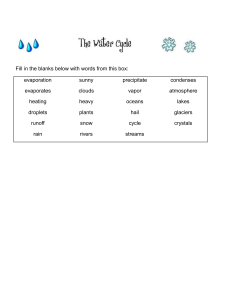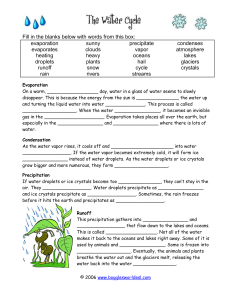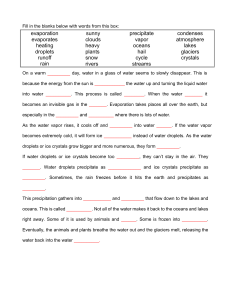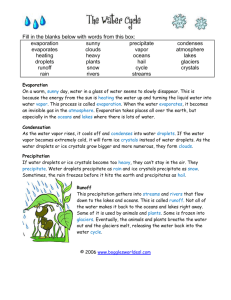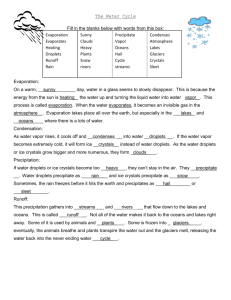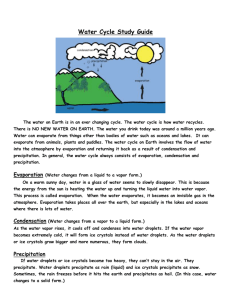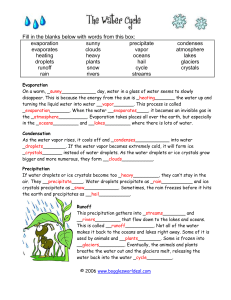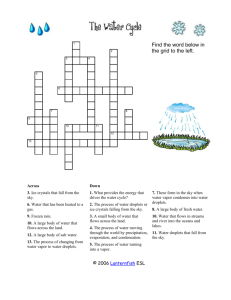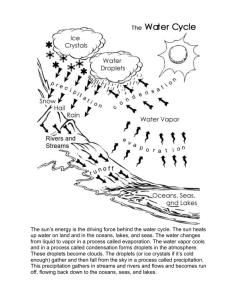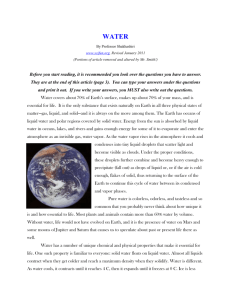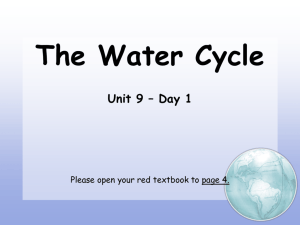Water Cycle Cloze - science
advertisement
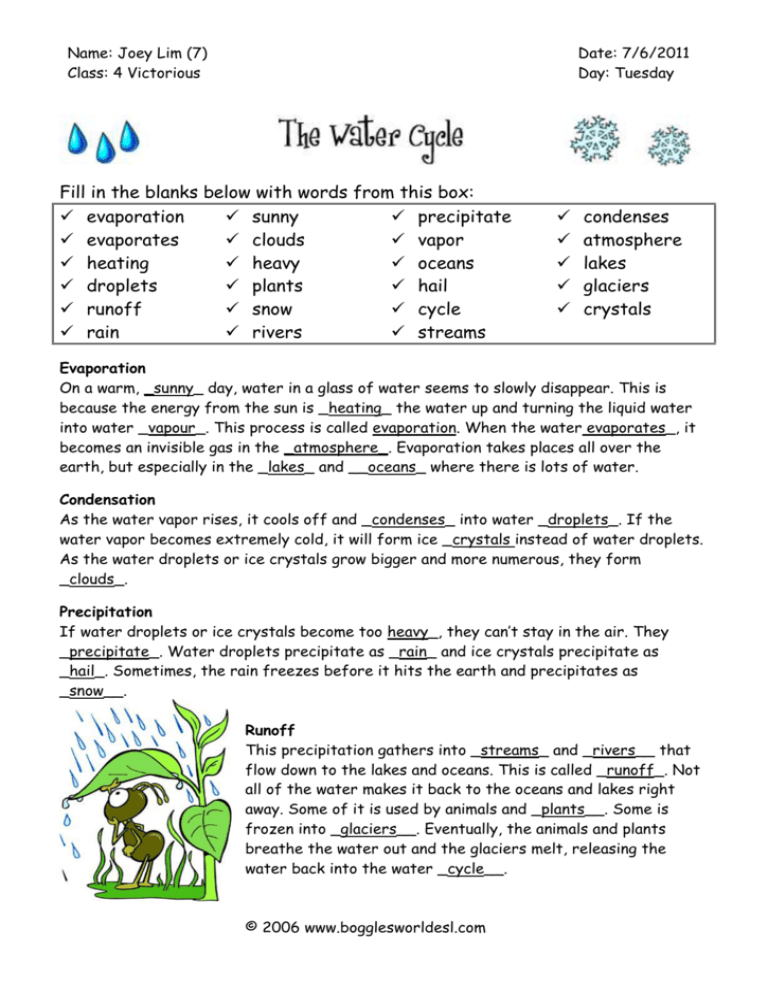
Name: Joey Lim (7) Class: 4 Victorious Date: 7/6/2011 Day: Tuesday Fill in the blanks below with words from this box: evaporation sunny precipitate evaporates clouds vapor heating heavy oceans droplets plants hail runoff snow cycle rain rivers streams condenses atmosphere lakes glaciers crystals Evaporation On a warm, _sunny_ day, water in a glass of water seems to slowly disappear. This is because the energy from the sun is _heating_ the water up and turning the liquid water into water _vapour_. This process is called evaporation. When the water evaporates_, it becomes an invisible gas in the _atmosphere_. Evaporation takes places all over the earth, but especially in the _lakes_ and __oceans_ where there is lots of water. Condensation As the water vapor rises, it cools off and _condenses_ into water _droplets_. If the water vapor becomes extremely cold, it will form ice _crystals instead of water droplets. As the water droplets or ice crystals grow bigger and more numerous, they form _clouds_. Precipitation If water droplets or ice crystals become too heavy_, they can’t stay in the air. They _precipitate_. Water droplets precipitate as _rain_ and ice crystals precipitate as _hail_. Sometimes, the rain freezes before it hits the earth and precipitates as _snow__. Runoff This precipitation gathers into _streams_ and _rivers__ that flow down to the lakes and oceans. This is called _runoff_. Not all of the water makes it back to the oceans and lakes right away. Some of it is used by animals and _plants__. Some is frozen into _glaciers__. Eventually, the animals and plants breathe the water out and the glaciers melt, releasing the water back into the water _cycle__. © 2006 www.bogglesworldesl.com
